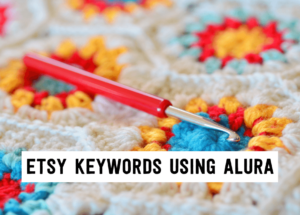
How to find the best Etsy keywords in 3 simple steps using Alura
If you want to be found in search results on Etsy, you need to optimize your product listing for SEO. And if you want to
join
– There are 3 steps to generate name ideas for your store,
– 5 name categories to choose unique business names from and
– 7 filters to help decide which creative brand name is the best name for your business.
Naming your Etsy shop or handmade business is not an easy task – and for some reason, it feels like if you pick the wrong brand name, your handmade craft business can’t possibly be successful.
Of course, that’s not entirely true but your business name IS one of those important decisions you have to make when you start your business and it can feel like an impossible task at times, and it certainly can make you want to pull your hair out.
So let’s not do that and dive into this method instead and generate a unique and creative name for your business!
Today I want to talk to you about picking a name for your handmade craft business. As I just mentioned in the intro, we’re going to come up with name ideas in 3 steps – and as we go along I’ll give you some tips and examples and might even suggest a few things to avoid too…
Here’s our agenda for today:
1 – let’s reframe what a business name is, what it needs to do, and also what it doesn’t need to do for your handmade store or Etsy shop
2 – brainstorming using the 5 business name categories
3 – using filters to make the best choice: 7 filters to try your craft business name ideas with
I also want to give credit and mention IgorInternational.com which is a business naming agency that kindly put together a really great guide around naming – I will be using most of their teaching in this video but of course they go into a lot more depth in their guide so if you’re interested in diving deeper on the topic of naming your business make sure to check it out.
OK, let’s get started!
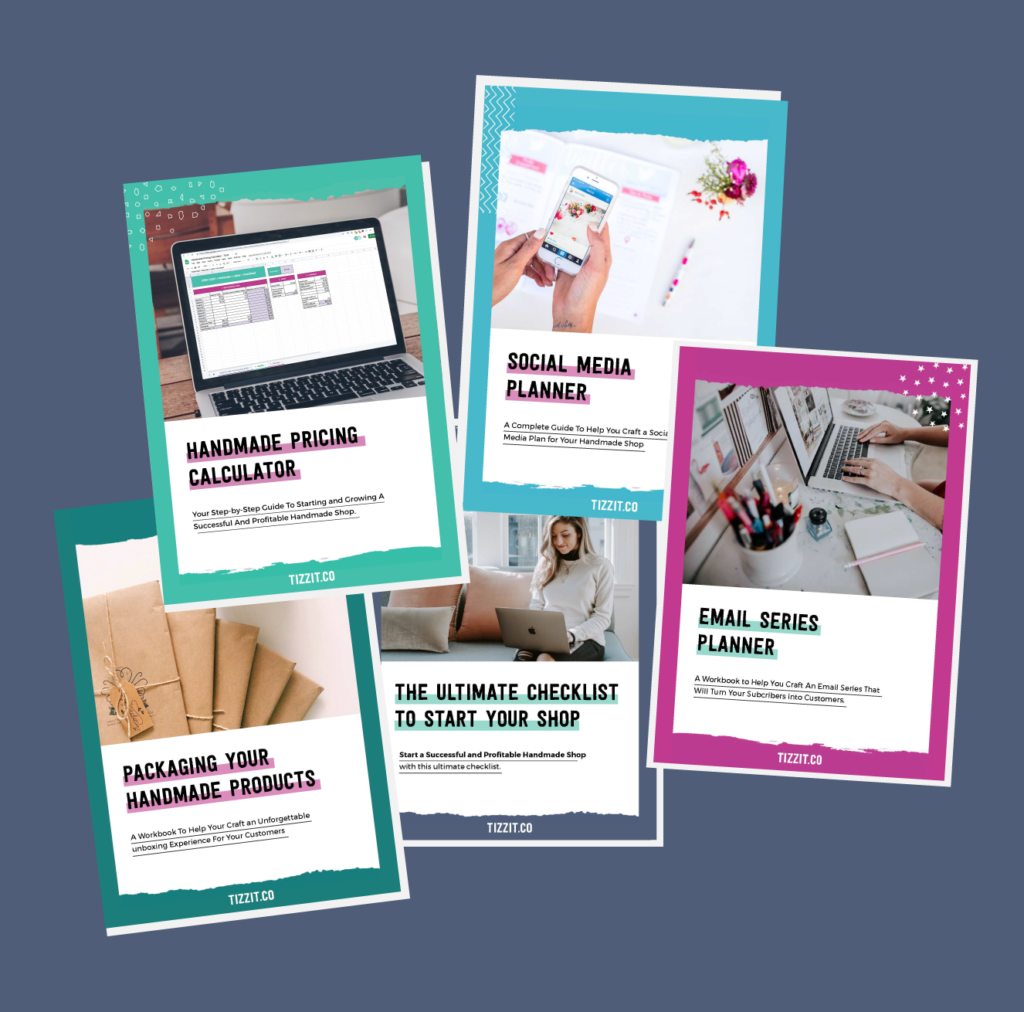
FREE WORKBOOKS, CHEAT SHEETS, AND RESOURCES TO HELP YOU START, GROW AND PROFIT FROM YOUR HANDMADE SHOP.
Your craft business name is just a name, a practicality. Business names don’t define your success and it doesn’t need to explain what your online store does – that’s not its job. All your unique name needs to do is evoke a feeling, an emotion and engage your ideal customers on an intellectual and emotional level (if possible). Your craft business name will always be in context – it will never be “on its own” so it doesn’t need to tell the full story of your crafted products or creative brand.
Don’t let naming your handmade craft business take so long you don’t move forward with launching your Etsy shop or online store – it’s just a pretty way to procrastinate. Let go of the pressure because again, your business name doesn’t define your success. There is no exact science to naming your business so let’s breathe in and have fun with the exercises in this video. And speaking of exercises, let’s dive into step 2!
This is just a “business name generator” brainstorm session, so don’t start filtering and judging your name ideas before you put them down on paper. We will do this in the next step. For now, you want to write ANYTHING that comes to mind as we go through the 5 categories of names.
Don’t filter yet, don’t hold back. Write them all down “Handy Mandy or Buttons and Bows, or Craft Angels” if they are the kind of name idea that pops into your mind. You WANT to have some not so good names ideas by the end of it – because the more bad name ideas you have, the better chances are that you have really good ones for your catchy craft business name in there too.
Category 1 is about “personal names” and this one is pretty simple – it means using your name as your craft business name..
That’s it. For me it would be “Deborah Engelmajer”, and that’s obviously not what I chose as my brand name, which I’ll explain when we get to the filtering section – but many brands do make this choice.
Think of Christian Dior, Celine, Calvin Klein, Honda, Ferrari, Tiffany&Co – obviously these aren’t handmade shops but I am using them because we all know them and have heard of them before.
So that’s your first option for a craft business name – using your own name. Obviously this does tie your brand pretty closely to your personal brand – so that’s not for everyone but it can be an elegant choice and as the main designer and creator behind your craft items because well… they’re handmade – it can work to lead with your actual name.
Category 2 is picking a craft business name idea that is descriptive or functional.
For example, something I see quite often is “JDG Accessories”
or “Jeanine Jewelry” (which is a mix of personal AND descriptive name because it has the word “jewelry” which describes what you are making and selling in it).
The Igor guide I mentioned at the beginning of this article explains why this is, for the most part, “unnecessary and counterproductive”.
Let me show you a part of this guide because I think it’s very well said:
“Names that are descriptive are asked to perform only one task: explaining to the world the business that you are in. This is an unnecessary and counterproductive choice.” – Igor International
There are a few reasons for that:
People will see your name next to images, colours, pictures of your creative products, or if more of an in-person situation like a craft show, or retail space, you will most likely be there introducing your shop – you won’t just stop at “I run a handmade shop called lilipods” or “I run a handmade shop called Ella&Louis” – your name doesn’t need to explain exactly what it is you create. It’s only a small part of the brand.
More often than not, adding that “descriptor” at the end of your business name like “jewelry”, “creations”, “crafts”, “accessories”, “soaps”, or “handmade” is not doing anything for your brand’s perceived value and for this reason I often recommend to drop it, which makes your name a lot “stronger” instantly.
For example:
… don’t sound as good or as professional as simply “Leaticia Matis”.
Category 3 are business name ideas that are invented or completely made up. These name ideas not actual words you’d find in a dictionary. Usually they are constructed to sound and look good, so that the experience of saying or seeing the name is pleasant.
Examples would be: BUBA, OREO, GOOGLE or ETSY.
That’s what I picked for my business name: Tizzit – but it doesn’t mean that is what you need to pick, it’s just an option.
The advantages here are that these names stand out instantly, they are often more memorable and more engaging. They are unique names that are easy to remember. No one also really knows what that business name means so you get to define from scratch the brand name identity that you want to create around it.
The fourth category is experiential. An experiential business name is a name that – I am quoting Igor International here – “offers a direct connection to something real”.
It’s a known word, it’s not made up like Oreo or Buba but it also doesn’t describe exactly what your business does.
An example of this kind of craft business name could be, if you sell digital invitations for kids parties on Etsy: Print&Party.
You’re not printing, you’ve nothing to do with the party itself, you just sell digital invites that people print themselves, but the business name does offer a connection to what people are really getting and wanting from this Etsy shop: print and party.
Another example could be – say you own an online boutique selling floral decor – Azalea, which is the name of a flower. You might not be selling the flower itself, but the business name does offer a connection to what you do.
Finally, the last category, number 5… are evocative name ideas.
Evocative name ideas are not made up, they are real words that you could find in a dictionary, but they also aren’t describing what you do or aren’t even really connected to it.
You might think that it sounds a bit silly, but it’s all about what those names EVOKE, and you’d be surprised at how many craft businesses use this strategy.
For example, Amazon – from what I know, this online business has nothing to do with the Amazon rainorest… not even close. But the name does evoke something exotic, different, thriving, and an idea of something of scale – the biggest forest in the world, the biggest bookstore in the world. (Initially, Amazon was just a bookstore.)
Another example: It turns out you can use the business name APPLE and sell computers really successfully. Apple is another evocative name that’s not describing what the company does nor is connected to it.
Taking this back into the world of Etsy shop and handmade craft businesses – which is why we’re here together today – an example of an evocative name could be, if you’re selling leather accessories on Etsy for people who love to explore the outdoors, “NORTHBOUND.” This craft business name idea gives a sense of adventure and exploration – it evokes these things, but it doesn’t describe what your craft isor connect directly to it.
Now that you know about the 5 categories, I recommend you take some time away from the computer to actually brainstorm business name ideas within each category. As I was saying, even bad name ideas need to go down on paper – you want to have a list of ideas by the end of it that you can then use to name your Etsy shop or craft business – and eventually check availability for your online store.
Once you have your list of catchy craft name ideas, you’re ready to move on to step 3 which is filtering down your ideas using 7 filters or 7 questions that will help you decide which business name is best for your online store or Etsy shop.
Here, you might even want to rank each of the name ideas you have for each of these 7 filtering questions. This way by the end of it, you can see which unique craft business name has the best score. 🙂
You are going to have to say your name when you introduce your craft business (or Etsy shop) or speak about it – and, most importantly, your customers will too: “Where did you get this cute wallet from?”… You want your business name to be easy to pronounce.. My name, Tizzit, is probably not the best example for this – it’s not difficult but I often get asked how to pronounce it. So I might not be the best example here – but it’s much better than using my personal name: Deborah Engelmajer, which, let’s be honest, no one knows how to pronounce. That filtered itself out.
Similarly to how it sounds, how do your shop name ideas look in written form? How would it look in a logo? Is it easy to remember and spell?
You want to avoid funny spellings of real words – this is harder than it seems to pull off and often lowers the perceived value of your brand.
When I chose the brand name “Tizzit” – I actually mostly fell in love with the look of it and how it spells because it’s a palindrom. Here again, my own personal name was NO BUENO as my business name.
That’s an important question and another reason I picked Tizzit – it stands out. None of my competitors or peers have a catchy craft business name even remotely similar to Tizzit. It’s a bit out there, but people remember it for that reason too. Making sure that your shop name is distinct and easy to remember is very important.
Are there different layers of meaning and association with this business name? And if so, what feelings about your crafts do they evoke? Is the shop name vibrant and does it have energy?
A good exercise here is to ask 5 people around you, without giving them much explanation to write down the first 10 things they think about when they hear or read your Etsy shop name, or craft business name idea. If nothing comes out – the name idea probably lacks depth. This will often happen with descriptive names. If they do have a list of 10 things your name makes them think of, check what those ideas are. If you’re selling luxury earrings in your Etsy shop and a lot of the associations they wrote down are around animals or kids, your name might not be evoking the right emotions for your customers.
This is really important in the handmade craft industry where creative online stores and brands are expected to have a more ”human” element to them – because you are buying a product made by hand and love, you want to stay away from shop name ideas that are corporate sounding or cold.
Craft business names with initials, like for example “D.E creations” can, for example, be on the cooler side of the humanness scale – it sounds a bit more corporate.
The sixth filter has to do with practicalities, which is usually where people begin when starting an Etsy shop or online boutique., I decided to put it more towards the end but it’s definitely important when you start your business.
Practicalities are things like: legalities, trademarks, business registration (you want to make sure no one else’s business is named like that), social media handles (Is there availability of the social media accounts under that business name?), and probably, most importantly, you need to check domain availability for that shop name as well.
It’s important to have a domain name for your craft business that matches your business name, but I don’t want you to stress over the actual extension. Back in the days it was really easy to get a .com domain and nowadays they’re all kind of taken, so it’s completely fine, you’ll still rank on Google and you can have a successful business without the .com – I for example use Tizzit.co because the Tizzit.com URL was taken and it’s not a problem. I’ve seen many businesses do something similar. So don’t completely write a name idea off if the .com is unavailable. Check domain availability of each of them if it’s necessary for your shop.
I recommend that if there are a couple of extensions, like .com and .co – grab both so that you can hold on to them and no one else can use them in the future.
Can you grow within this Etsy shop name or craft business name? This is an important question because where you are right now in your online business journey is probably not at all where you’ll be in 5 or 10 years or even 6 months. You may discover that you’re not enjoying the type of crafts you’re making or you’ll discover a new art technique or broaden up your creative product offering.
It’s quite a normal process of building a handmade craft business to have those identity crises from time to time. We all have them. I surely had many myself before I started Tizzit.co. I had an array of business name ideas because every time I had to reinvent my brand and my business name because it was too descriptive – which is how I learned that lesson the hard way. So it’s important to pick a shop name that you feel you can grow into so you don’t have to change it if you change your crafts or art, or pivot your business.
Of course there is no real right or wrong choice here – these filters are here to help you pick between different name ideas once you’re done with your brainstorm, but as I was saying earlier – your Etsy shop name (or name for your business) doesn’t define your success – so don’t put too much pressure on yourself and try to have fun with this process.
Starting a handmade craft business is an exciting and rewarding journey and I am certain you can turn your handmade skills into a profit to be proud of, no matter what your name ends up being.
you might also like…
related articles

If you want to be found in search results on Etsy, you need to optimize your product listing for SEO. And if you want to
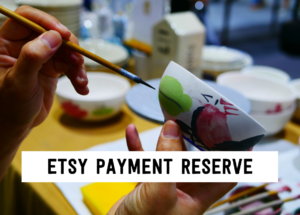
There has been a lot of talk in the Etsy community — and I mean A LOT of talk — about Etsy’s payment account reserve

Anyone who knows me knows that I am a HUGE advocate for using email marketing to grow and scale your handmade business. But you may
Sign up below and get instant access to a collection of FREE practical guides, workbooks, and checklists that will help you start, grow and profit from your handmade shop. (without pulling your hair out!).
disclaimer
subscribe to youtube
become a member
get in touch
We acknowledge and give thanks to the Budawang and Yuin people, the Traditional Owners of the land we work and live on. We pay our respects to all Aboriginal and Torres Strait Islander Peoples and elders past, present and emerging.
4-step Maker’s Roadmap System
Library of In-Depth Courses and Training
Live Monthly Coaching Sessions
A Supportive Online Community
close
We hate spam too. Unsubscribe at any time.
close
We hate spam too. Unsubscribe at any time.
close
We hate spam too. Unsubscribe at any time.
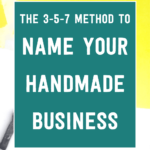
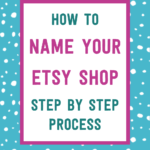
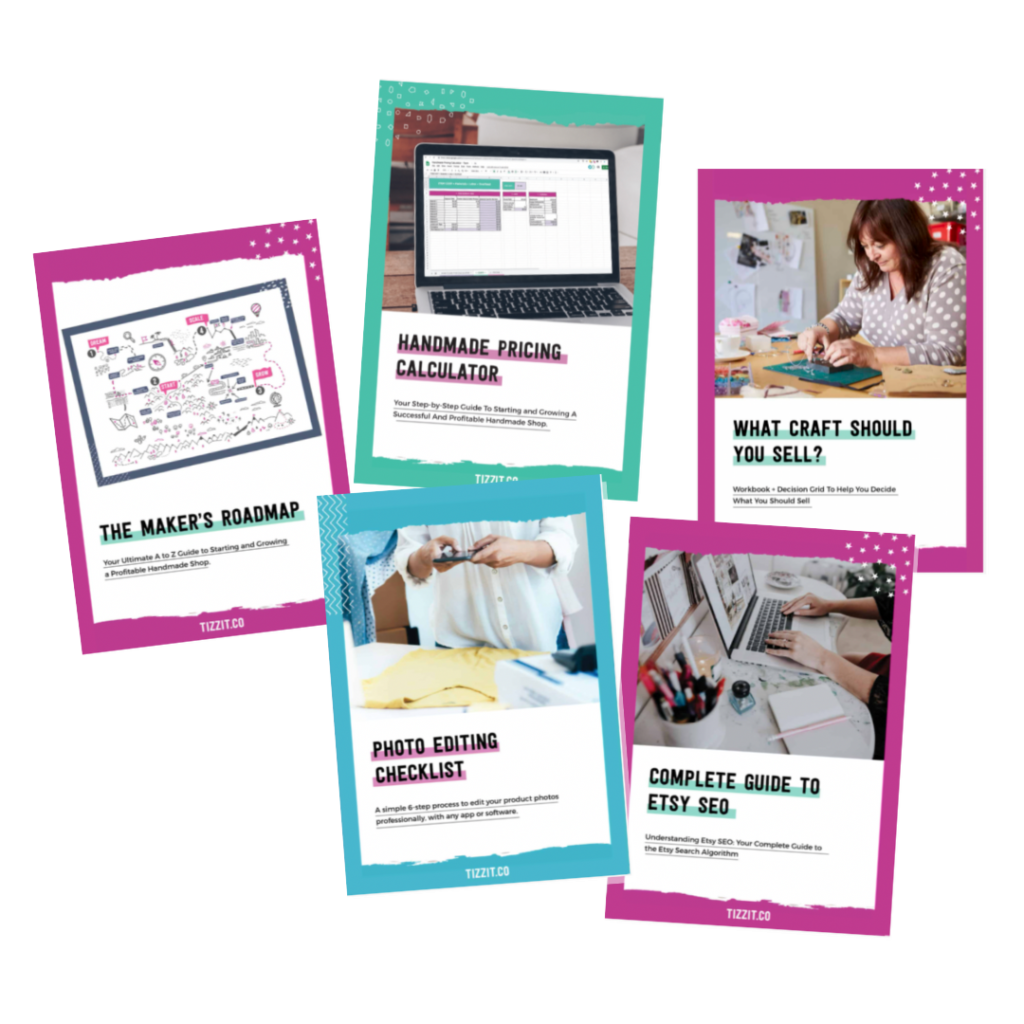
Get Instant Access to
The FULL Resource library
Wished I had this on hand 10 years ago when I was naming my business! Excellent tips.
Thank you so much, Mary! I’m glad you liked it!
Very good tips here on your article. Thank you. I have my actual business name, but I am thinking on to change it, due to the future proof rule 🙂